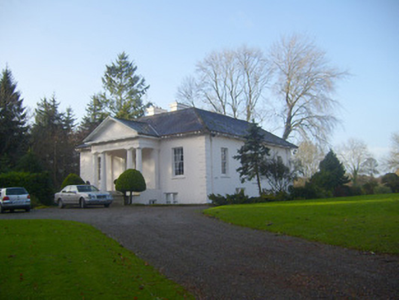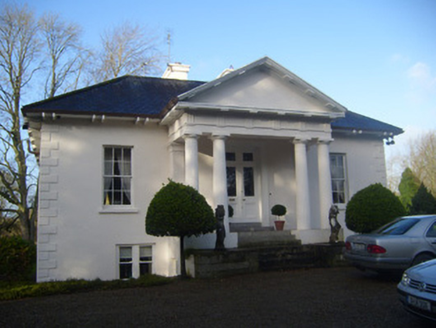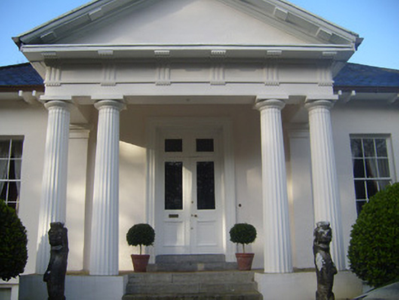Survey Data
Reg No
21807009
Rating
Regional
Categories of Special Interest
Archaeological, Architectural
Original Use
House
In Use As
House
Date
1830 - 1850
Coordinates
166016, 162738
Date Recorded
05/12/2007
Date Updated
--/--/--
Description
Detached three-bay two-storey over basement villa style house, built c. 1840. Comprising pedimented fluted Doric portico to front (east) elevation and gable-fronted breakfront to rear (west) elevation with flanking full-height conservatories. Hipped slate roof having overhanging eaves with timber brackets, rendered chimneystacks and cast-iron rainwater goods. Lined-and-ruled rendered walls having render quoins. Square-headed openings to ground floor with painted stone sills and six-over-six pane timber sliding sash windows. Square-headed openings to basement having bipartite one-over-one pane timber sliding sash windows. Portico comprising fluted Doric style columns supporting rendered entablature with triglyphs and metopes. Square-headed opening having double-leaf half-glazed timber panelled doors. Flight of limestone steps to entrance. Square-headed openings to rear elevation, ground and first floors with render surrounds and double-leaf half-glazed timber panelled doors. Flight of stairs having metal railings to first floor door. Pair of square-profile rendered piers to east with double-leaf cast-iron gates and rubble stone walls terminating in second pair of square-profile piers.
Appraisal
This well composed house retains many features that attest to its high quality design and execution. Historically, the house was the seat of Sir Richard de Burgho, Bt. According to Samuel Lewis's 'Topographical Dictionary', the house was erected in 1815 by Sir John Allen de Burgho (Burke). Small in scale, the building is nonetheless highly decorative incorporating an imposing fluted Doric portico, which gives the façade an air of grandeur. Situated on Cloon Island on the River Shannon, the house is plays a significant role in the land and riverscape of Castleconnell. The house has some archaeological significance being adjacent to a medieval chapel, which was possibly founded in 1291 by Reginald de Burgh.





